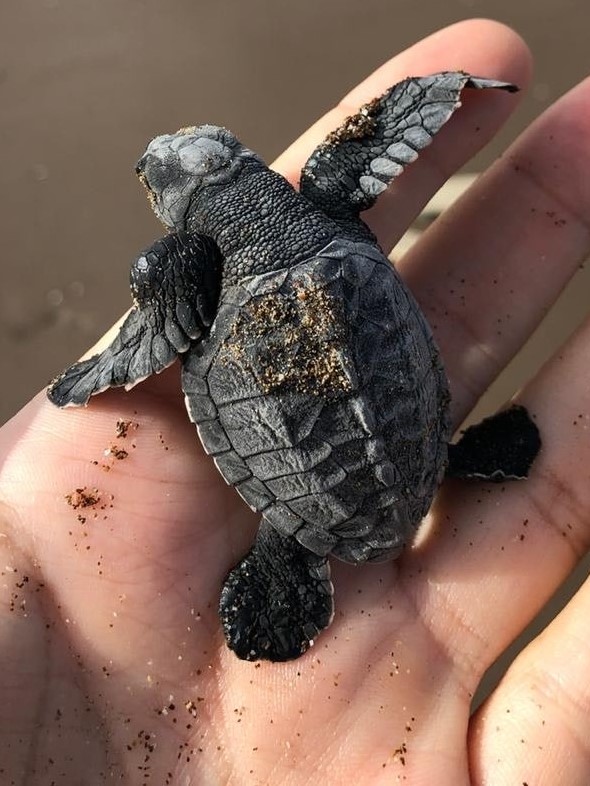A hatchling of Olive Ridley turtle
Our Correspondent
DUBAI
Sharjah’s Environment and Protected Areas Authority (EPAA) has much to rejoice on World Sea Turtle Day — it has found the first evidence of Olive Ridley turtles breeding in the UAE, WAM reports. Previously, only Green and Hawksbill turtles were known to breed in the country.
Classified as ‘vulnerable’ by the International Union for the Conservation of Nature (IUCN), the Olive Ridley turtle is the second smallest and most abundant of the world’s six marine turtle species.
EPAA announced that it recently observed and photographed a turtle hatchling crawling towards the sea from the beach of the Kalba Kingfisher Retreat in Sharjah’s East Coast enclave of Khor Kalba. The Kingfisher Retreat is situated in the Alqurm Protected Area, which covers 500 hectares, and includes a tidal lagoon, a mangrove (qurm) forest and a beach facing the Gulf of Oman.
The Alqurm Protected Area, declared as a Nature Reserve by H.H. Dr. Sheikh Sultan bin Muhammad Al Qasimi, Supreme Council Member and Ruler of Sharjah, is also home to one of the world’s rarest birds, the local sub-species of the Collared Kingfisher.
After receiving the photograph of the hatchling, the EPAA sent an inspection team to search for evidence of nesting, EPAA Chairperson Hana Saif Al Suwaidi said.
“The team located several tracks on the middle and upper part of the beach, leading them to conclude that multiple turtles successfully hatched and made it to the sea.” Al Suwaidi said.
Endangered species
Growing to a length of around 2 feet in carapace length, the Olive Ridley turtle is found in warm and tropical waters, primarily in the Indian and Pacific Oceans, but also in the Atlantic. Studies in Mexico have shown that the species has a normal weight range of 25-46 kg.
The Olive Ridley turtle was subjected to heavy commercial exploitation, with one million being harvested off the coast of Mexico in 1968 alone. While conservation efforts have largely ended commercial exploitation, the total global population of annual nesting females is estimated to have fallen to around 850,000 by 2008.
Continued threats include the collection of eggs, killing of adults on nesting beaches, incidental capture in fishing gear, vessel strikes and ingestion of marine debris.
The species is best known for its behaviour of synchronised nesting in large numbers, known as ‘arribadas’. The majority of the Indian Ocean population nests on the beaches in Odisha, India.































